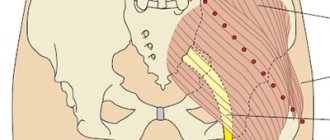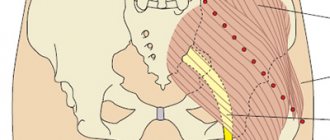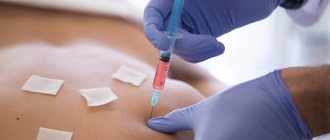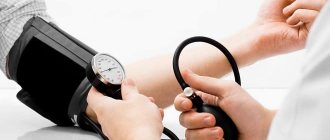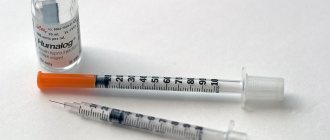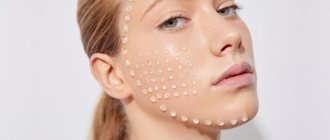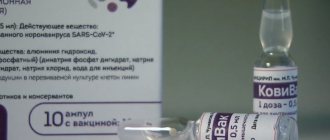Intramuscular injections at home
There are several ways to administer the medicine, which is in the form of a solution. The most commonly used are intravenous and intramuscular injections. Injections into a vein require special preparation. Only physicians: doctors and nurses can carry out the manipulation.
You can handle an injection into a muscle without any special skills. The thigh, buttock and shoulder are suitable for injections. Where to inject depends on the drug. It is preferable to give painful injections to the upper outer square of the buttock. The butt is the best place for oil solutions.
At home, the thigh is used to self-administer medication. It is difficult to inject yourself in other places without outside help.
The shoulder is chosen as the injection site when it is not possible to remove the lower part of the patient’s clothing. Immobilized patients with a large body weight are another reason to inject the drug into the shoulder. It is also used when there is a need to give several injections at the same time.
For the injection to benefit the patient, it is important to comply with three conditions:
- carefully follow the antiseptic rules;
- ensure the most complete relaxation of the muscles in the injection area;
- follow the injection technique.
Preparation for the procedure
When preparing to give an injection into any muscle, wash your hands with soap and treat them with an antiseptic. Disinfectants from the pharmacy, medical alcohol, cologne and even vodka will do. After this, it is better to wear sterile medical gloves.
Before drawing the medicine into a syringe, doctors recommend carefully examining the ampoule. Drugs with a cloudy sediment and with an expired expiration date will have to be replaced. If everything is in order, treat the upper edge of the container with an antiseptic solution, take the medicine and squirt it out a little to release air bubbles.
After the injection is made, all instruments are thrown away. It is forbidden to use them twice.
How to give a shoulder injection
Before making an injection in the shoulder, you need to determine the location. This part of the arm has 2 areas suitable for injection. The outer part of the upper arm is suitable if the drug is injected under the skin.
For intramuscular administration, the deltoid muscle is used. There are several ways to correctly determine where it is:
- The patient is asked to remove clothes to the waist and bend his arm at the elbow. In this position, they look for the place of articulation of the scapula and clavicle near the joint. The medicine can be safely injected into an area that is approximately 2.5 cm below.
- The hand is divided into 3 equal parts across. The location you are looking for is the center of the middle third.
- From the top of the joint, move 4 fingers down. The injection is given in the central part of the zone.
After the injection site is determined, the delta of the shoulder and the surrounding area are treated with an antiseptic. It is better to do this with two different cotton wool or napkins.
Using your thumb and index finger, stretch the skin in the injection area. The syringe is clamped between the index and middle fingers of the hand. Use your thumb to secure the piston.
The needle should enter the muscle at an angle of 90 degrees to the skin. You cannot immerse it more than 2-3 cm.
The medicine is injected smoothly, slightly increasing the pressure on the piston. After removing the needle, apply a napkin moistened with an antiseptic to the injection site.
Security measures
Despite the fact that injections have long been familiar to everyone, in essence this is a minimally invasive (associated with penetration under the skin) procedure, and when performing it it is necessary to strictly observe all precautions. They will protect the patient from complications. Basic safety requirements include:
- Do not inject the medicine 2 times in a row in the same place. Otherwise, the formation of hematomas and bruises is possible.
- Before opening the package with the syringe, you must make sure that it is sterile. If the packaging is damaged, it is better to take another tool. This syringe cannot be used.
- It is not advisable to inject the medicine into the affected areas. If there are lumps, bruises, or redness at the intended injection site, it is better to inject in another area.
- Scars from burns and other significant skin damage, large moles and the area around them are extremely undesirable places for injections.
These requirements apply to injections into all areas. Additional safety precautions should be taken when the injection is given in the shoulder:
- It is difficult to get into an undeveloped deltoid. If the patient's muscles are poorly developed, this place is unsuitable for injection.
- You cannot give an auto-injection in the shoulder.
- It is important not to make a mistake when choosing an injection area in the shoulder on the arm. The cost of a mistake may be a damaged nerve or large blood vessel.
Which vaccine leaves a mark on the left shoulder?
As we found out, scars remain when vaccines against BCG and smallpox are given in childhood. They are administered intradermally, the process of antibody production is accompanied by inflammation at the injection site. As a result, after healing, a small scar remains. Sometimes ADSM vaccination (against tetanus and diphtheria) is performed in the shoulder area, and rubella vaccination is given, but there are no traces after them. Vaccines administered in childhood must be noted on the vaccination certificate. If you have this document on hand, you can always find out which drugs were injected into the left shoulder.
Possible problems and their solutions
Complications after injections cannot always be prevented. Some of them can be fixed on your own. More serious ones require medical help.
If you have to frequently inject into the same place, a compaction appears under the skin - an infiltrate. To relieve discomfort, apply a warm heating pad to the affected area. Traditional medicine advises to alleviate the condition with the help of a cabbage leaf attached to the cone. If the veins on it are very dense, the leaf should be slightly beaten. Honey cakes cope well with infiltration. To prepare them, mix a spoonful of rye flour with a spoonful of honey.
An abscess occurs if sterility is compromised. The injection site becomes inflamed, the temperature rises and pus appears. You will not be able to cope with the complication on your own. At the first signs of an abscess, consultation with a surgeon is necessary.
If there is a strong, sudden contraction of the muscles during an injection, the needle may break. To remove the fragment you need tweezers. First, it is squeezed out just like a splinter. The tip of the fragment that appears on the surface is grabbed with tweezers and pulled towards itself and upward. If the attempt fails, you need to call an ambulance or go to the emergency room.
A hematoma occurs when a blood vessel is damaged. To prevent it from causing an abscess, apply a warm compress to the affected area.
Necrosis is the death of tissue. Occurs when the drug is administered incorrectly. The most common cause of necrosis is calcium chloride getting under the skin. Pain, swelling, ulcers and blisters are symptoms of tissue death. If necrosis is suspected, ice is applied to the affected area. You can call an ambulance or get to the hospital yourself. The complication is treated only under the supervision of a doctor.
A slow pulse, pale skin, and swelling of the larynx immediately after the injection indicate the development of anaphylactic shock or an immediate allergic reaction to the drug. You cannot cope with this condition without the help of doctors. It threatens the patient's life. Calling an ambulance is the only way to help the victim.
Injections, regardless of where they are and what they are for, can only be given as prescribed. You cannot prescribe them to yourself, according to the principle “just like that”, or “you just wanted to”, such as changing your hair color. But many, completely believing word of mouth and other rumors, begin to prescribe themselves injections for wrinkles, for weight loss, and finally, for increasing potency. And they inject not only injection drugs, but also all sorts of nonsense, like technical glycerin or “extract from the talons of an eagle.” The least harm from such “self-medication” will be its uselessness, and then the cost of it will only be the cost of these “miracle drugs”. Well, at worst... In general, let's not talk about the bad.
In general, all injections can be divided into three categories: • Subcutaneous; • Intramuscular; • Intravenous.
They are all different from each other, but one thing unites them completely - all solutions and instruments must be sterile . We’ll talk about the features of this or that injection below.
Subcutaneous injections.
The most painless type of injection, but there are volume restrictions - up to 2 ml. Some people, due to inexperience, believe that this type of injection is for slow absorption of the drug into the body. But few people know (medics don’t count) that the subcutaneous fat layer has wonderfully branched vessels, and it is precisely for a quick effect on the body that such injections are given. And insulin injections carried out in this way are the best confirmation of this.
There are several parts of the body where it is preferable to give such injections: • Part of the leg from the hip to the knee. Very convenient place for self-injection; • The outer part of the arm from the shoulder to the elbow is where many of us have had traces of vaccinations since childhood; • Under the shoulder blade. Also a well-known place for vaccination; • Under the arm. More precisely, in its lower part; • Abdominal area. Most of us associate stomach injections with painful rabies injections, of which we had to give ten of them. But this has nothing to do with small and painless injections under the skin.
All these areas for injection are recommended not only by the number of fat cells and capillary density, but also by the density of nerve endings. After all, the injection should not only be useful, but also painless.
Place of vaccination
It would seem, why not do all intramuscular vaccinations in the shoulder, if it is so convenient? There are a number of reasons that may prevent you from injecting into this place:
- Undeveloped muscles - if the patient has dystrophy or is simply poorly developed physically, it can be quite difficult to hit the deltoid muscle. In this case, it is better to vaccinate in the gluteal muscle or thigh;
- Inexperience of the person performing the procedure - a carelessly performed injection can lead to damage to the brachial or ulnar nerve or brachial artery. If the vaccinator is not confident in his accuracy, it is better to choose another place.
- Injection performed independently - correctly injecting into the shoulder without assistance is much more difficult than in the thigh. If there is no assistant, it is better to avoid this method.
- Extensive damage to the skin in the deltoid muscle area - this includes burns, birthmarks, large scars, and so on. For injection, it is better to choose the cleanest place on the skin.
If vaccination in the shoulder is possible, the first step is to decide on the injection site. An intramuscular injection is made strictly into the outer surface of the shoulder. It’s easy to find a suitable place for grafting: measure four fingers from the top of the shoulder joint and mark the center of the area. Another way: visually divide the arm from the elbow to the shoulder joint into three identical horizontal lines. The center of the middle region will also be the most suitable place for vaccination. The area is selected in such a way that anatomical differences between people or a small error will not result in hitting a nerve or artery. The injection site can also be seen in the image below.
Ways to get rid of a scar after vaccination
Many people have marks on the left shoulder after vaccination. But the skin of different people differs - for some, vaccine spots heal quickly and are minimal in size, while others dream of getting rid of large and unsightly scars. This can be done today by peeling - grinding the top layer of skin. By the time the scar forms, the process of developing immunity is complete; removing the scar will not affect it. There are several methods to get rid of scars:
- mechanical grinding of the surface layers of the skin;
- laser peeling;
- chemical peeling with acids;
- phenol peeling.
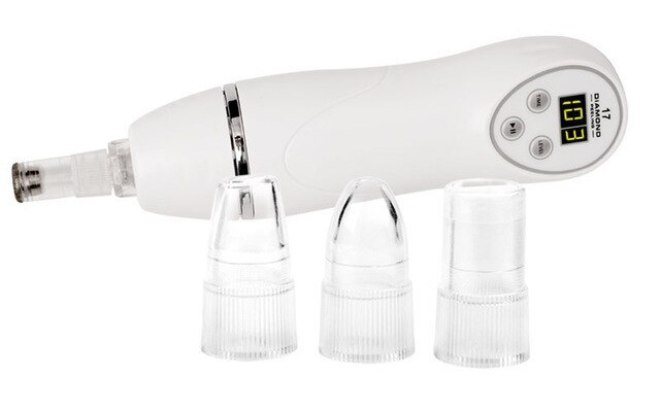
The laser method is the safest, does not cause pain and has virtually no contraindications. This cleaning of the upper layers of skin is especially important for older people who have numerous large scars after vaccination against smallpox.
However, you should not remove vaccine marks on the shoulder if there is a congenital tendency to form keloid scars. It manifests itself in the formation of thick and rough growths in places of deep skin trauma. With this peculiarity of the body, small scars should not be touched in order to avoid the appearance of even larger scars in the same place. Masking a scar with a tattoo when keloid scars form is also not worth it.
Execution algorithm
Any medical procedure does not tolerate deviations from the instructions, including an injection in the shoulder. It is important to maintain sterility and sequence of vaccination. What you will need for the injection:
- Three-component injection disposable syringe with a volume of up to 5 ml, needle length 50–70 mm, inner needle diameter 1–15 mm;
- Drug solution, nail file for safe opening of ampoules;
- Sterile cotton wool or special wipes for disinfection;
- 70% solution of medical alcohol;
- Latex gloves;
- Containers for disposal of medical instruments and consumables.
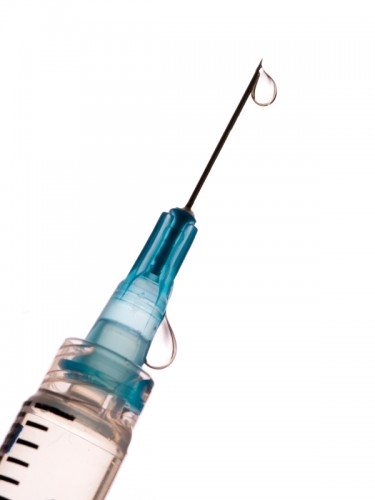
Make sure that medications are stored in accordance with the instructions. If storage conditions are not observed, the properties of the drug are lost within the first 3–4 hours.
How to properly inject into the deltoid muscle, step by step:
- It is convenient to sit the patient down, explain the procedure to him and obtain consent for it.
- Wash and dry your hands, put on sterile seals.
- Place the needle on the syringe and turn it slightly clockwise to secure it.
- Draw the required amount of the drug into the syringe, first checking the drug label and its expiration date.
- Check for air in the syringe by spraying a small amount of solution out of it.
- Treat the shoulder with a cotton swab or napkin moistened with alcohol, paying special attention to the injection site.
- Stretch the skin at the injection site with the thumb and index finger of your free hand.
- Hold the syringe securely in your working hand, placing it between the middle and index fingers, fixing the piston with your thumb.
- Smoothly insert the needle into the muscle, perpendicular to the skin surface by 2–3 cm.
- Slowly increasing pressure with your finger on the syringe plunger, inject the drug into the deltoid muscle.
- Smoothly remove the needle from the patient’s tissues along the same vector as during insertion.
- Apply a new cotton swab or napkin moistened with alcohol to the vaccination site.
- Throw away the used syringe and consumables, remove and discard gloves.
These instructions can be printed for convenience. At first, it is extremely difficult to remember all the nuances of this procedure without confusing anything.
Exactly following the instructions, which must always be followed, will ensure a high-quality injection, with virtually no pain.
How to prevent scarring
A small vaccination scar on the left shoulder is normal. Its size depends on the innate rate of cell regeneration and the skin's ability to regenerate. Nurses at the maternity hospital know how to inoculate the shoulder with minimal damage to the skin. However, after the vaccine is administered, the body may behave differently, so you should not think that the large size of the scar is the result of a medical error. A scar is formed as the body produces antibodies to microbes and subsequent cell regeneration. Its size depends little on the actions of medical personnel. If the presence and diameter of the vaccination mark were determined by the experience and competence of the medical staff, it would not be noticeable to everyone. By the way, the scar remains even in those people whose childhood post-vaccination wound healed quickly and was practically not inflamed.
It is useless to take special measures to prevent the appearance of a scar. You cannot lubricate the crust with ointments or treat it with any other compositions - this will not affect the size of the scar, but will only disrupt its formation and the process of antibody production. In adulthood, if desired, scars can be removed by peeling or by getting a tattoo on top of them.
You should not refuse vaccination just because it will leave an unsightly scar. Vaccination against tuberculosis is very important - almost every person has “dormant” pathogens of the disease in their body. At any moment they can “wake up”, or a person will receive an additional dose of microbes upon contact with another patient - and tuberculosis will begin. The vaccine helps develop immunity and prevent the sudden onset of the disease.
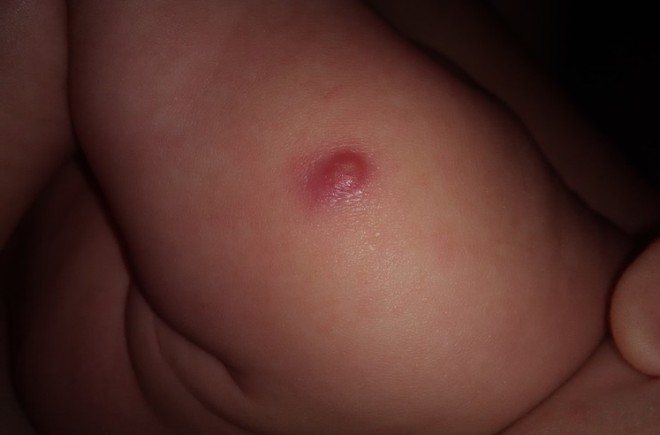
Vaccine care rules
There is no point in paying increased attention to the process occurring in the area where the injection is performed. If the vaccine turns red, this is normal in the first days (or even weeks) after vaccination. The body must independently produce antibodies to the introduced microbes in order to form immunity. Despite the pain in the first days, the vaccination does not limit the movement of the arm. It is necessary to ensure that the child does not scratch the injection site and does not violate the integrity of the wound. In addition, you should not:
- lubricate the crust with ointment;
- treat with antiseptics;
- apply a bandage;
- remove the crust.
In a word, there is no need to touch the vaccination site again. If possible, there should be access to air; do not wear too tight clothes. Wool fabrics may irritate the injection site.
Important Details
In addition to step-by-step instructions, you need to know the important features of the procedure in order to make injections easier and more painless. The very first thing to remember is the need to warm the drug to human body temperature or at least room temperature. The administration of cold medicine provides extremely unpleasant sensations and promotes aseptic inflammation (a sensitive swelling appears at the injection site), which takes up to 2 weeks. This rule includes the need to relax the muscles - tension only increases pain and makes it difficult for the needle to penetrate.
Large amounts of fatty tissue can also make it difficult for the needle to penetrate the muscle. If the person receiving the vaccine is obese, you may have to choose a longer needle. The recommended length in this case is equal to the thickness of the subcutaneous fat + 3 centimeters. The volume of adipose tissue can be approximately assessed by palpation (palpation). You can tell whether the needle has reached the muscle by a change in tissue resistance - the needle penetrates muscle tissue much harder than through the subcutaneous fat layer. If you cannot determine whether the needle is in the muscle tissue or not, you should inject again. Subcutaneous administration of solutions intended for intramuscular administration is strictly prohibited. Before injecting the drug solution into the muscle, pull the syringe back a few millimeters. This is necessary so that the medicine does not get into a blood vessel accidentally pierced by a needle.
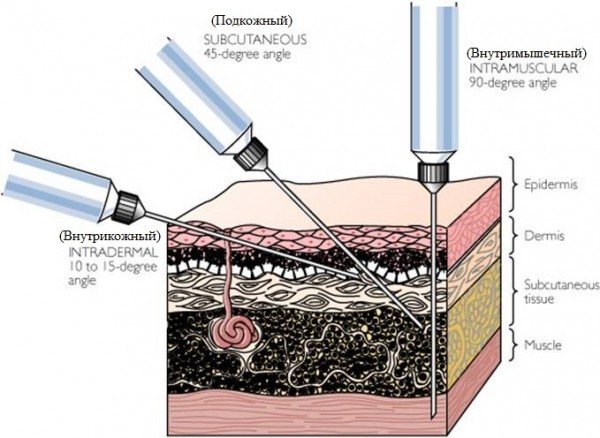
The needle must be inserted confidently, with a gradual, uniformly accelerated movement. Under no circumstances should you inject with a “blow”. In this case, it is possible to pierce the entire muscle tissue down to the axillary tissue, which will bring severe pain to the patient. Also, do not inject an excessive amount of solution. If the doctor's prescription indicates large quantities of the drug intramuscularly, it is better to make several injections. Otherwise, aseptic inflammation of the muscle tissue with compression of the nerves will occur. This is extremely painful and can render the limb inoperative for some time.
This is all the important and necessary information for those who have to get intramuscular vaccinations in the shoulder. Try not to deviate from the instructions unless agreed upon by qualified physicians. We wish you easy, painless injections and more success in nursing!
What happens if the vaccine is given incorrectly?
If vaccination by any method is carried out in a deviation from the rules, complications are possible which, unlike a post-vaccination reaction, do not go away on their own, requiring medical intervention.
Complications include:
- severe redness, suppuration of the insertion site;
- cold abscess;
- significant increase in temperature;
- symptoms of an infectious disease;
- severe allergies.
Incorrect vaccination may be due to:
- ignoring contraindications;
- violation of vaccination technique;
- poor quality of the drug;
- improper storage or transportation;
- hypersensitivity to vaccine substances.
